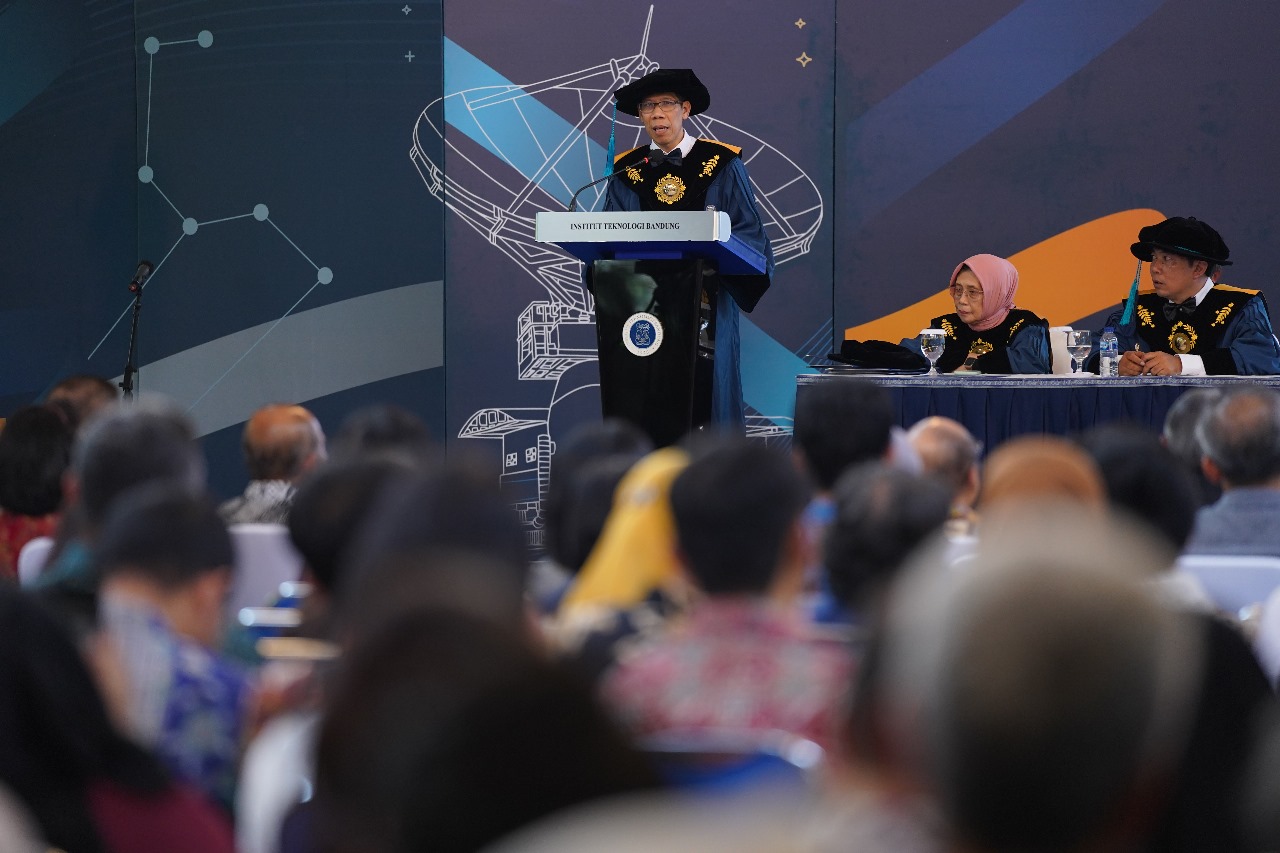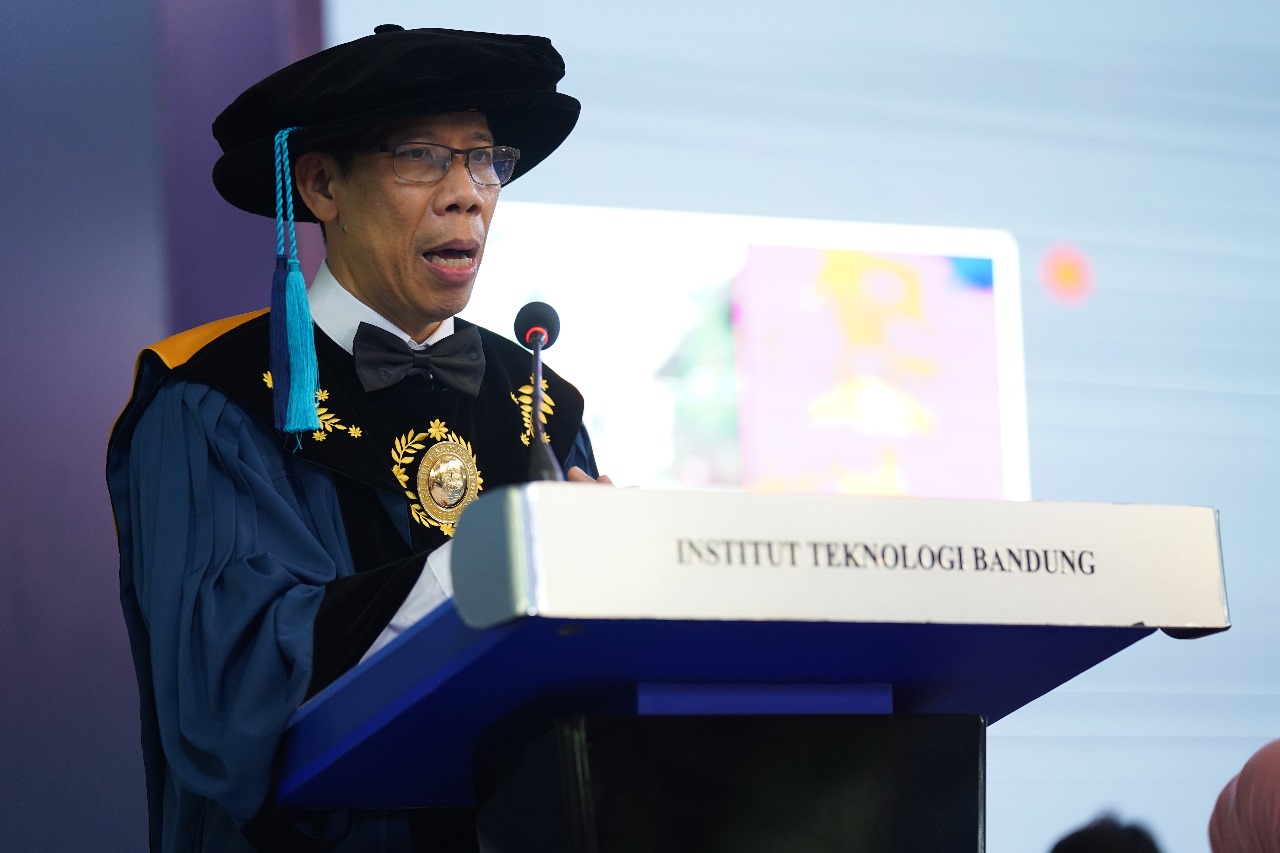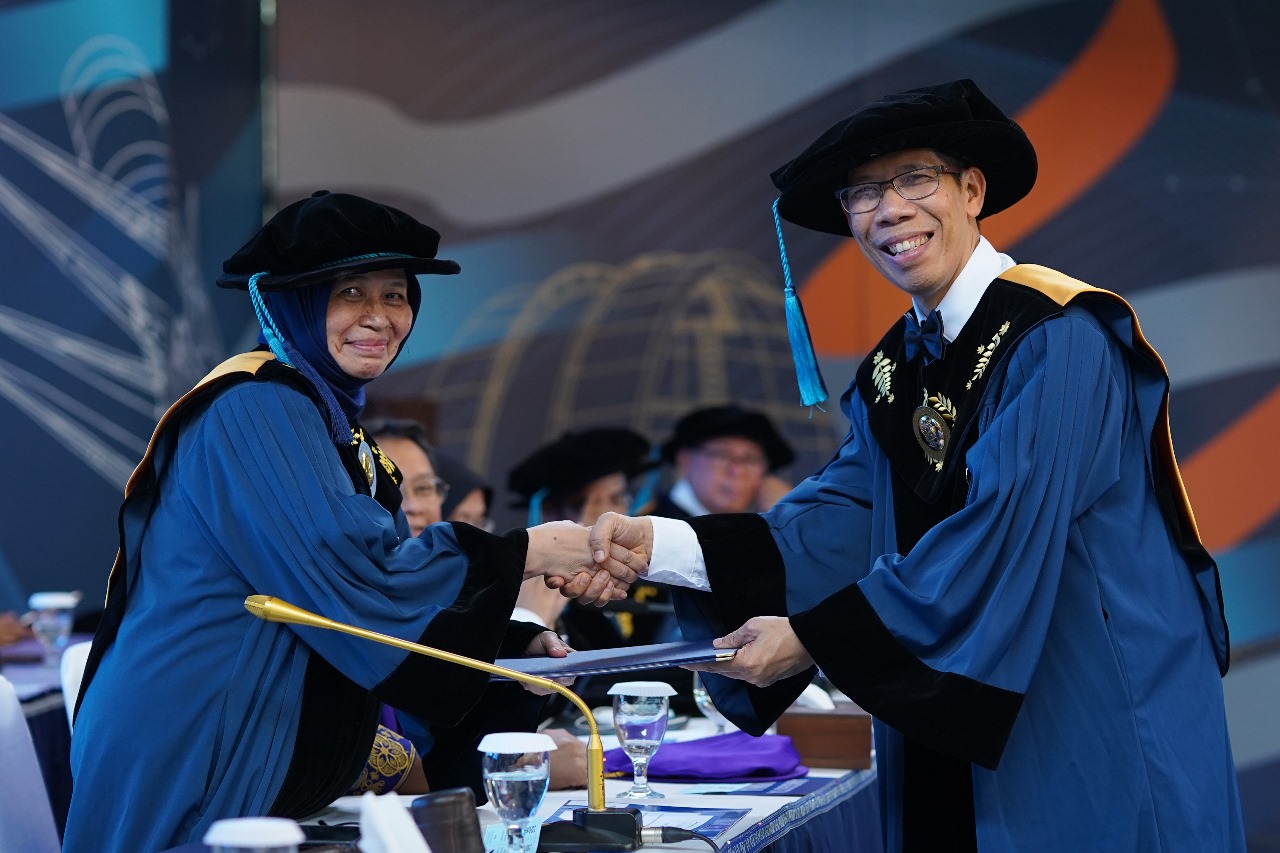Beating Urban Heat: Prof. Surjamanto's Scientific Solutions Revealed in Scientific Oration Forum.
By Anggun Nindita
Editor Anggun Nindita

BANDUNG, itb.ac.id— The Professors Forum of Institut Teknologi Bandung (FGB ITB) once again arranges a scientific oration for professors. The event was held on Saturday (27/1/2024) in the West Hall, ITB Ganesha Campus, Bandung.
One of those who delivered his oration was Prof. Dr. Ir. Surjamanto Wonorahardjo, M.T., from the School of Architecture, Planning and Policy Development (SAPPD) ITB. The topic presented by Prof. Surjamanto is "Development of Thermal Environmental Control Technology for Buildings and Urban Areas.''
He explained that the materials used in building construction are one aspect that has quite a high influence on the thermal environment in an urban area. This is due to the construction material that functions as a sheath that covers the entire building.
Later, this sheath will receive energy from the sun and store it in the form of heat. Later on, it will be emitted into the environment in the form of long waves or infrared. This phenomenon will later form the thermal environment around urban buildings.
At the beginning of his presentation, Prof. Surjamanto stated that buildings made from heavy materials such as brick, concrete, asphalt, and so on have a tendency to emit higher heat emissions than light materials such as glass. This can be seen from an infrared camera or thermal imager which shows that heavy materials emit a dominant red color when checked.

"The fact that construction materials, especially heavy materials such as concrete and asphalt, can emit heat emissions into the environment makes the urban heat island phenomenon inevitable.
The impact is quite serious. Hail, local flooding, and several other issues related to global warming are among the problems that can arise if these issues are not controlled," he said.
An urban heat island is a phenomenon of increasing urban air temperature compared to the surrounding area. According to Prof. Surjamanto, this phenomenon is not a new problem because it has appeared since 1818 and 1820. However, the formulation of effective solutions to overcome this problem is still renewed to this day.
One technology formulated to solve this problem is the thermal insulation in buildings. In principle, this is done by changing the brick building wall into a sandwich wall. The application of this kind of wall will affect the heat flow process that occurs inside.
"Basically, this sandwich wall will prevent the flow of heat from entering the room. As a result, the room inside will be cooler since it is able to separate the heat from the outside. "However, this separation is too extreme because this will indirectly increase the thermal conditions outside, so for tropical environments, this solution has not been satisfactory for us," he explained.

Another solution that Prof. Surjamanto said is a reflection technology. It utilizes the reflection of sunlight on building materials. One of the ways to get this is by coating some parts exposed to sunlight with white paint.
“The results of this reflection technology are impressive. This solution can directly reduce the urban heat island effect during hot sunny hours. Apart from that, even when the sun is not too high, this solution is able to reduce thermal heating in urban areas," he explained.
At the end of his presentation session, Prof. Surjamanto mentioned several other alternative solutions to overcome the urban heat island problem, including shading and light envelopes, internal thermal mass, and energy conversion. These technologies continue to be developed so that the best solution to this thermal environmental issue can be resolved.
Reporter: Nur Rama Adamas (Teknik Sipil, 2020)
Translator: Ayesha Lativa Mafaza (Postharvest Technology, 2021)
Editor : Anggi Nurdiani (Management, 2024)

.jpg)


.jpg)
.jpg)

.jpg)